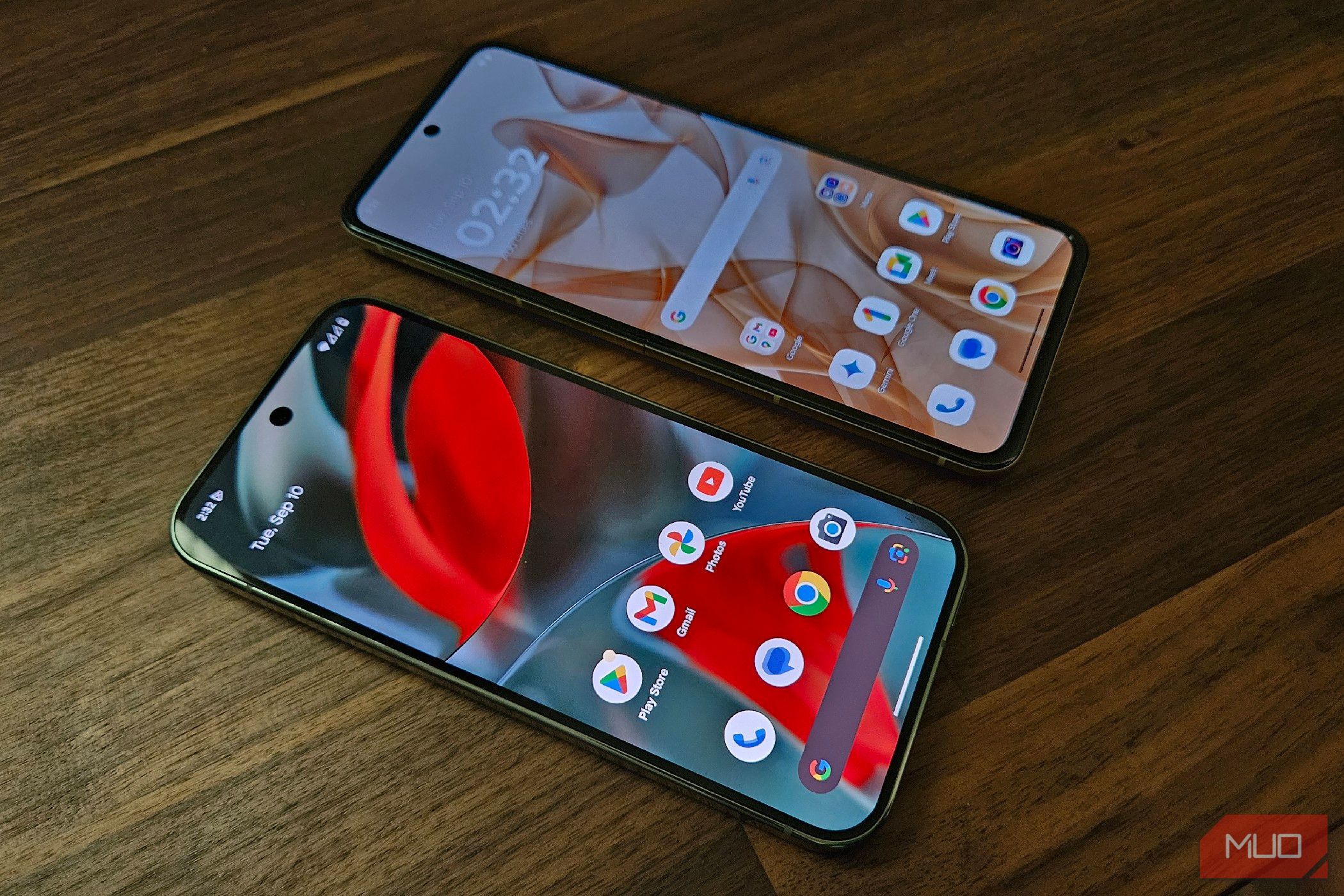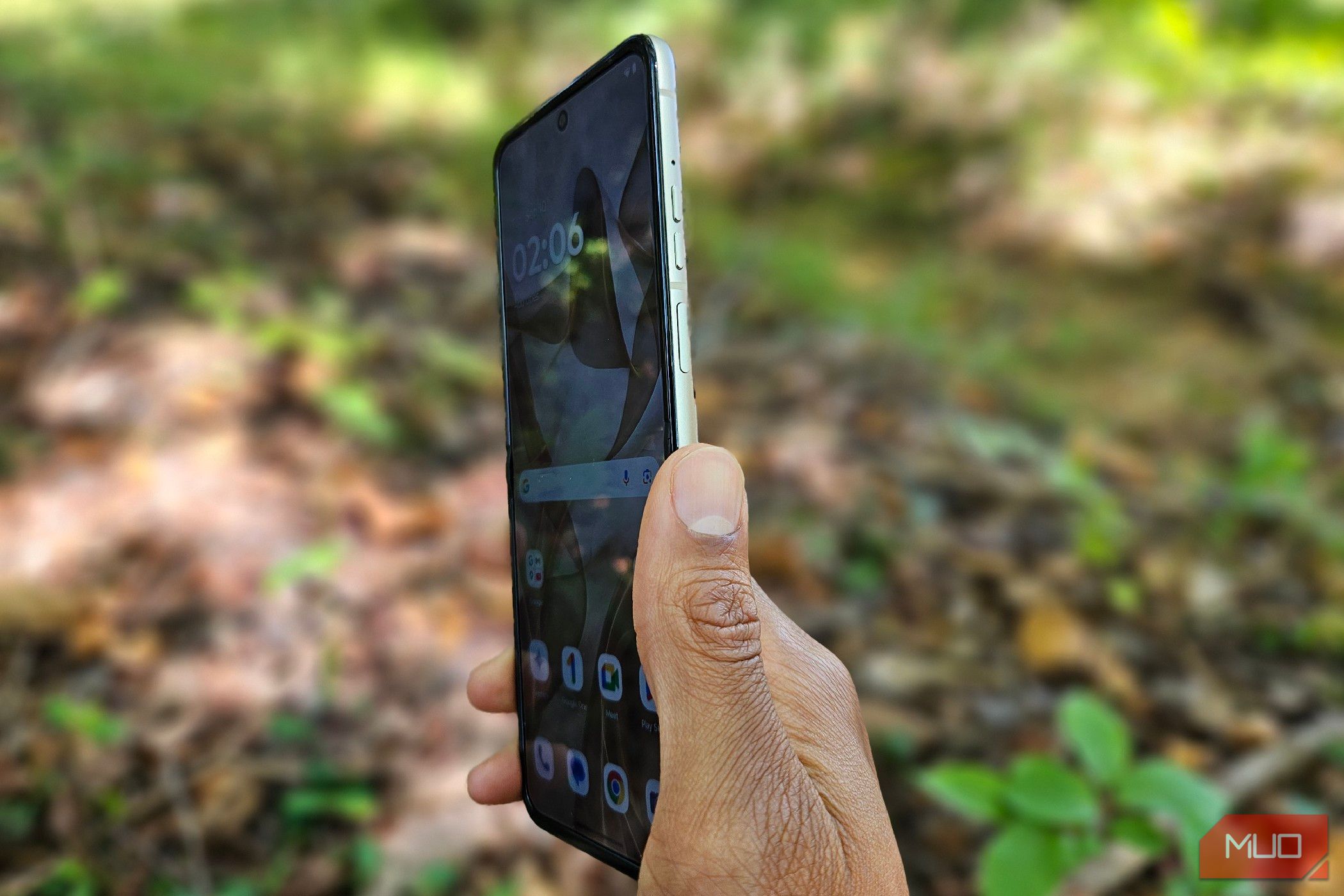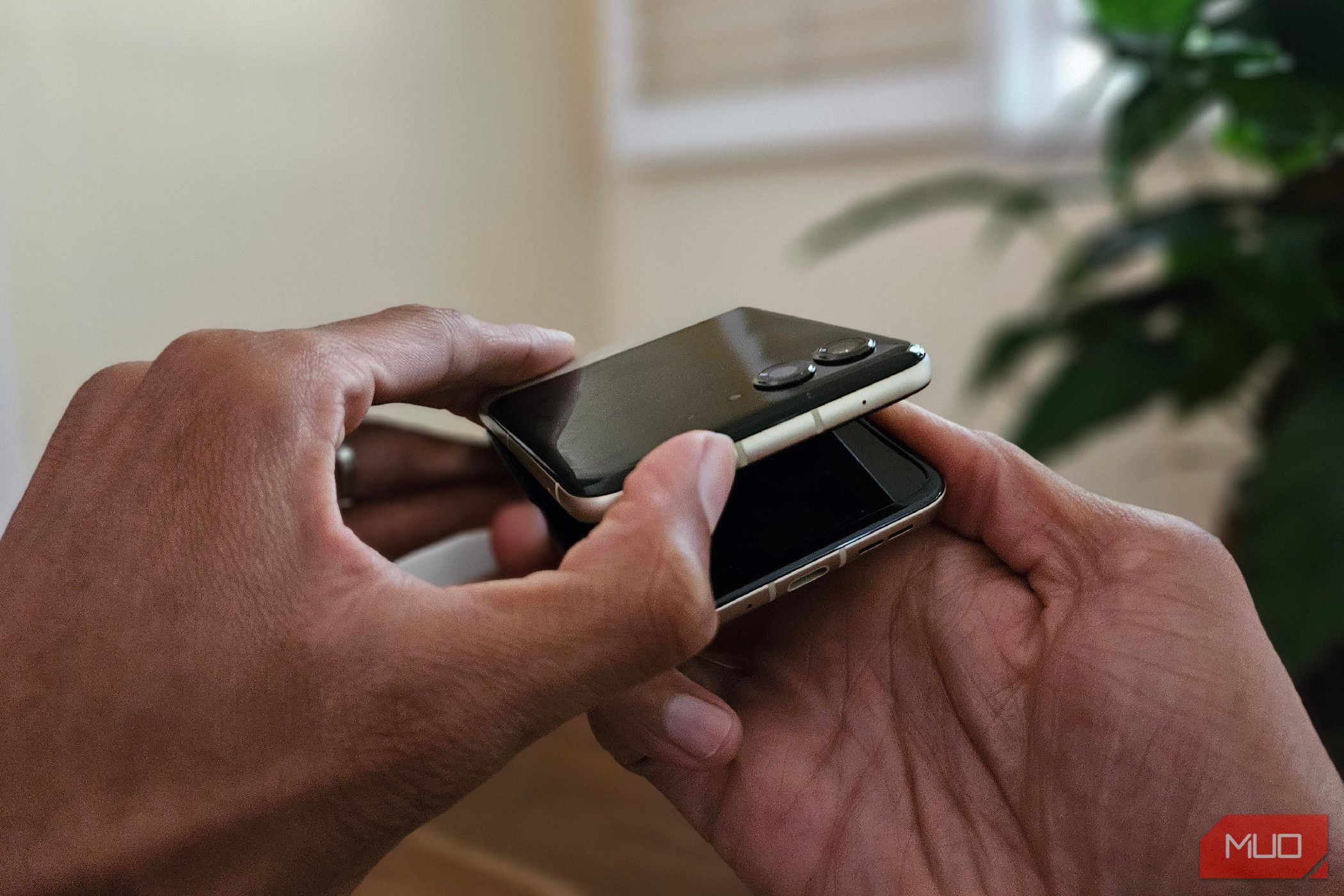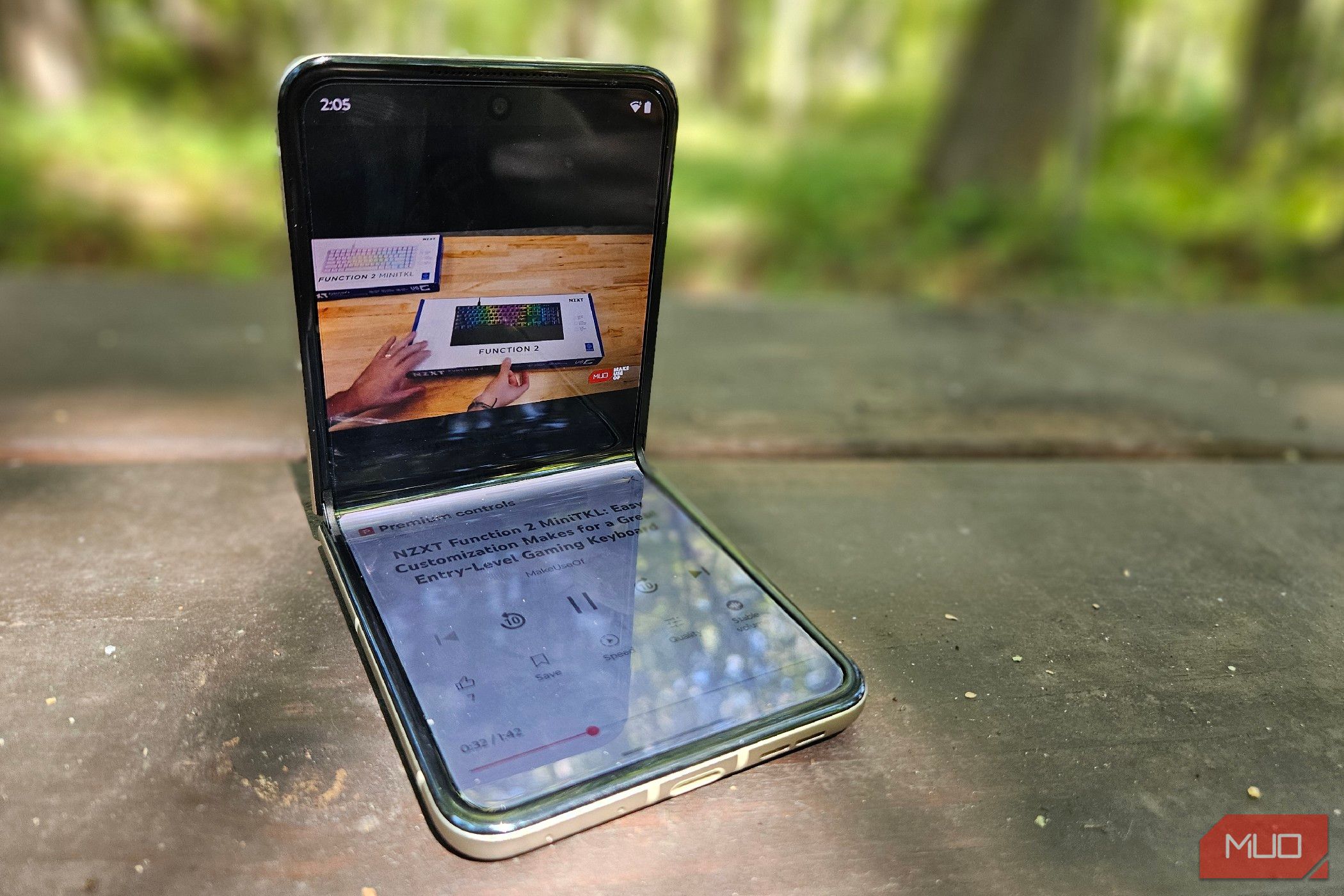Since I love and enjoy using book-style folding phones, I thought I would love flip phones, too. Turns out there are quite a few quirks that, after getting my hands on one, I can’t wait to go back to my Galaxy Z Fold 5.
1 Flips Are Awkwardly Tall When Open
Modern smartphones are very tall devices. They’re typically over twice as tall as they are wide. Flip foldables tend to be even taller. When I unfolded a Motorola Razr 2024 next to a Google Pixel 9 Pro, it was half an inch taller. Surprisingly, it’s even taller than the Pixel 9 Pro XL!
Despite having long fingers, I find it uncomfortable to reach up to view notifications on most modern smartphones. I find it even more uncomfortable on a flip foldable. The same is true for any interaction that involves reaching up to the top half of the screen, like tapping the clock widget to set an alarm.
Having a large outer screen is a way to get around this issue since it feels like I’m using a small phone, but there are reasons to prefer flip phones without a big cover display.
2 Buttons Are Higher Up Than You’d Expect
Smartphone makers have agreed that buttons go on the side of the phone. More often than not, this is the right side. On the Galaxy Z Fold 5 I use as my daily driver, the power button that doubles as a fingerprint reader is halfway up the right side. The volume buttons are just above it.
On a flip, buttons can’t go halfway up the phone. There’s a hinge there. Since going below the hinge would be cramp-inducing, the buttons go above instead. To unlock or power on such a device, I have to reach higher than I expect. And to adjust the volume, I have to stretch even higher.
Can I get used to this? Yes and no. I’ve used tall phones before, and things do get easier with time. But I never reached a point where I stopped wishing my phone was shorter. I eventually just bought a shorter phone. A flip increases the number of things that make me wish I had a shorter phone.
3 Prepare to Use Two Hands, a Lot
The outer screen is one of the biggest distinctions between the Motorola Razr and Samsung’s Galaxy Z Flip 6 we reviewed. The former has a larger outer screen that can replicate much of the functionality of the inner one. Yet even on the Razr, most people will probably open their phones to use most apps.
Opening a modern flip isn’t as easy as flipping open a comparable dumbphone. While feature phones are easy to manage with one hand, opening a flip foldable requires two. Technically, yes, you can wedge the screen open with one hand by digging in your thumb and using part of your body as a wedge, but this is awkward and not exactly easier than just using both hands.
For tasks that require one hand with a slab phone, you’ll often have to use both with a flip foldable. Again, I’m well accustomed to opening my Z Fold 5 a ton throughout the day, but if my wife sends me a lengthy grocery list text while I’m at the store, viewing that entire text only takes one hand with my phone’s cover screen, which isn’t much smaller than that of a typical phone.
On the Razr, I’m more likely to use both to open the phone since the outer display doesn’t show the entire text. And once the phone is open, I’m still going to use my second hand more often to help me reach the top half of the screen.
4 The Aspect Ratio Isn’t Great for Video
Foldables of all types aren’t as ideal for streaming video as you may think. In theory, a foldable screen offers the promise of a larger screen, but there’s no getting around the physical constraints. If a book-style foldable opened to a landscape 16:9 aspect ratio, it wouldn’t be shaped like a phone when closed. The internal screen has to be closer to a square to keep these phones pocketable. This means videos on a book-style foldable appear only slightly larger than on regular phones.
On flip phones, videos are sometimes actually smaller than on regular phones. That’s because, with such tall, narrow aspect ratios, videos can’t fill the entire screen without cropping out part of the footage. That means a YouTube video on the Motorola Razr 2024 is ever-so-slightly smaller than the same video playing on a Pixel 6.
Unlike book-style foldables, being able to prop up a flip doesn’t help with watching videos. Yes, you can technically watch a video in the top half of the screen while the controls occupy the bottom half, but most of us won’t particularly want to settle for postage stamp-sized TV.
5 It Still Feels Chunky in My Pocket
Part of a flip phone’s appeal is how much less space I imagined it would take up in my pocket. And yes, it is in fact smaller than a regular slab phone. On average, a flip is half the height of the phone it is likely replacing.
But that comes with a trade-off. A flip-style foldable is roughly twice as thick, so instead of an awkwardly large rectangle in your pocket, you get an awkwardly bulky square instead. Is the flip still more pocketable? Maybe, but it’s not the clear choice I thought it would be.
Think of it this way: If you like minimalist phones like the Light Phone II or standard dumbphones because of how small they are in your pocket, flip foldables feel closer to smartphones than basic phones in size. They’re a tad bulkier than you might expect.
I don’t want to discourage anyone from buying a flip-style folding phone. While I may prefer book-style foldables over flips, I’d still more likely choose a flip than a conventional slab phone. I find them more fun and think their pros outweigh their cons. But these little quirks can get old pretty quickly. That’s something to keep in mind, considering that many flips still cost in the ballpark of $1,000.





